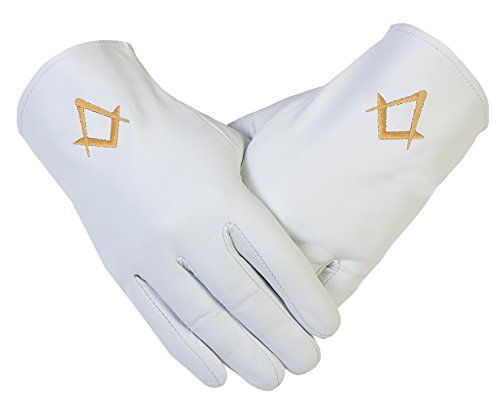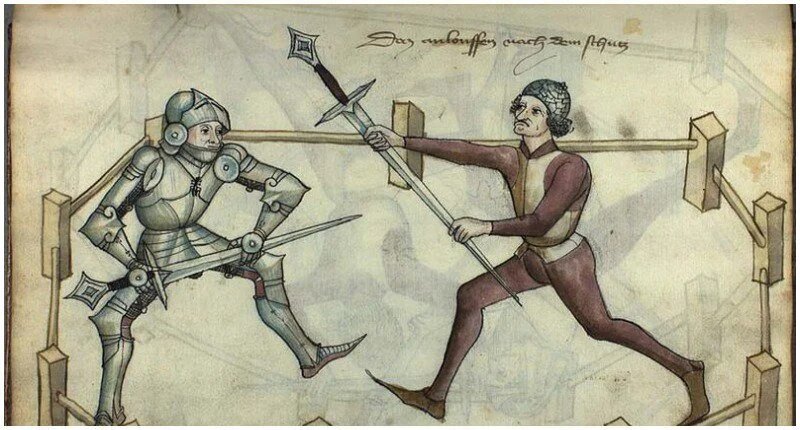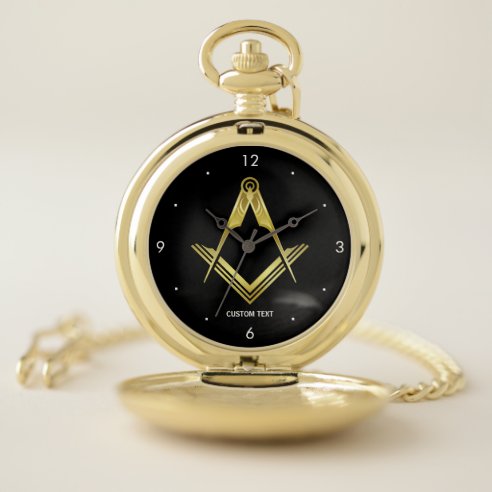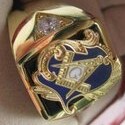There is a time-immemorial tradition, both in Masonry and outside it, of the wearing and giving of gloves”
Bernard E. Jones
The function of the gloves is to protect and avoid injury to our hands and skin. The Medieval Knights wore them in fight to have a stronger grip on the sword. Later, their metal version was introduced; called gauntlets, they better protected against blows. The gloves thus took on a meaning of strength, courage and authority, with Kings and nobles also wearing them to affirm their supremacy over the simple folks. But they were also a useful tool for avoiding direct contact with dirty objects and not so hygienic people. Once upon a time In the Catholic Church, even the Pope and high prelates wore white gloves to indicate their chastity, which albeit only a few observed.
In the middle ages, the so-called “sweet gloves”, were gloves saturated with the perfumes of herbs and spices and they served to hide the nasty odour of the skin browned with…dung. They were in use across the Continent by both men and women.
Catherine de ‘Medici, an Italian-born monarch of France, made these fragrant gloves renowned at the Court in the 16th century. She was even accused of poisoning one of her greatest enemies, a Huguenot named Jeanne d’Albret, with a pair of gloves she had gifted him. Centuries later, the French author Alexandre Dumas, spun the story of this poisoning Queen into a historical novel called “La Reine Margot.”
Today the gloves are employed for the more refined purpose of maintaining hygiene and preserving aseptic conditions and to be worn in the most accurate tasks, such as those performed by a surgeon on the human body.
Through age, gloves became too a symbol of duty, so that those who wore them in front of their Master showed they were ready and willing to serve him to the best of their ability. This is the case of a Butler or valet in an affluent household.
The two Masonic historians Mackey and Gould reported that in 1381 the Lord of the Castle of Villaines-en-Duesmois purchased a large quantity of gloves to give to the masons for “safeguarding their hands from the stone and the lime”.
In the Chartreuse of Dijon, a Carthusian Monastery, there is a picture of operative masons at work wearing gloves and the records of York Cathedral of 1355 show that masons employed at its construction received an apron and gloves from their masters. Gould quotes the Benedictine monk Matthew Paris as showing an image in his manuscript Vitae Duorum Offarun, of masons working with gloves on the construction of St Alban’s Abbey in Hertfordshire.
There are many other very similar records throughout the ages to be found.
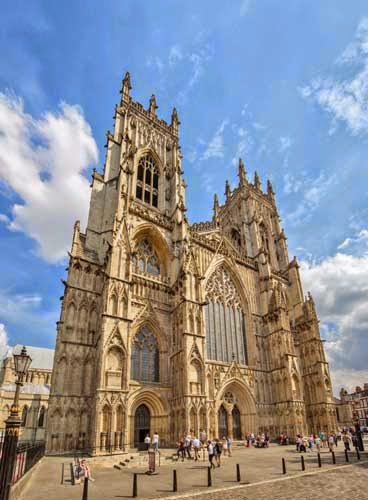
As mentioned, gloves became a status symbol in antiquity, but kings started to allow them for use even in skilled occupations such as coin minting.
In addition to practical use, the gloves have also taken on a variety of interpretations through generations. For example, the action of removing a glove to welcome a friend or shake someone’s hand, became an unequivocal statement of trust in that person. In contrast, the gesture of taking off a glove and tossing it at a rival was a sign of challenge at the time when gentlemen used the duel as a way of asserting their honour. And in medieval Courts of Law, after the sentencing, the judge used to fling the glove at the convicted. In William Shakespeare’s workTroilus and Cressida, it is said: “I will throw my glove to Death himself”.
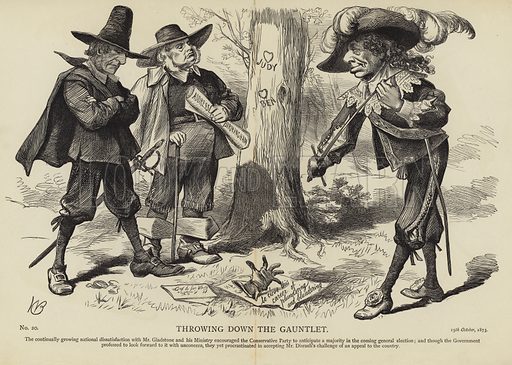
Because the gloves were difficult to manufacture, they were luxury items and in many portraits of the 16th century, only the truly wealthy are seen wearing or holding them. The industrial revolution made possible their production in large scale, thus making them more affordable whilst the social and cultural revolution of the 1960s, relegated them to mere winter accessories or gardening protection.
GLOVES IN FREEMASONRY
When visiting a place that holds an important meaning to us, such as a church, a theatre, an office, or a school, we all agree that dressing appropriately is a prerequisite.
If we go to a temple, we dress to honor the place’s sanctity and similarly when the Freemasons enter their spiritual place, the Masonic Temple, they wear an apron, gloves, and other formal attire. A sore note, however, is to see that Brethren aren’t always mindful not to brandish their profane and valuable belongings in the Temple. It is indeed common to notice Freemasons of every degree and office flaunting in that holy place, their expensive watches, jewellery, multi-colored dazzling medals, all sizes and forms of lapel pins, and other vanity paraphilia. Pretentiousness is not considered in Freemasonry and ostentation is offensive towards both the Most High and the destitute Brethren who may have fallen to the lowest rung of the wheel in life.
In the Temple, Freemasons wear white gloves to indicate the spiritual nature of their labour. But there are times when they must remove them and perform labour with their naked hands. This is the moment of the ceremony when, in some Masonic Orders, the Brethren link their hands to form the Chain of Union, a ritual that transmits physical and magnetic energy to each Brethren whilst receiving spiritual energies from the Most High. It is one of Freemasonry’s most privileged and arcane moments, when love, peace, and harmony all join in perfect harmony.
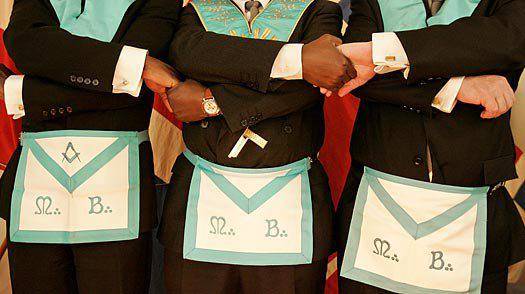
To express unity, nothing is more fitting than a single line, the ends of which come together to cancel each other
By Oswald Wirth
Otherwise, only when activity is paused for refreshment, do Freemasons take off their gloves.
In early Freemasonry, the Brothers presented gloves to the Apprentice, as we still do today in some Masonic Orders, symbolizing to the novice that he was receiving a legacy that he should return to the lodge through his commitment and dedication. They called the gesture “a loan of honour”.
In the 18th century it was practice to ask the Candidate to “clothe the Lodge”. It consisted in the candidate presenting each Brother of his lodge with a pair of gloves purchased at his own expenses.
The Schaw Statutes of 1599 direct that, at his Initiation, the Fellowcraft shall provide a banquet and “ten shillings’ worth of gloves” to the lodge’s chest. This became known as “glove money” and was a custom in the early Scottish Lodges. On rare occasions, three pairs of white gloves were given at Initiation: one for the Apprentice to wear, one as a memento, and the third for his lady, in “compensation” for the time he would spend away from her to attend Masonic meetings. This was the case of the ritual performed by the Rectified Scottish Rite of 1773.
Bertrand Jones in his book “Freemasons’ Guide and Compendium” reveals that the minutes dated 1756, of the Old King’s Arms No.28 Lodge, which met in the Strand, London, state: “the Lodge be clothed with aprons once a year and at the beginning of the year, gloves for the sisters”. And E. Jones discloses that in a document dated 1772, the Lodge Master addresses the Initiates in these terms:
Put on these gloves; their whiteness is the symbol of purity, and of the innocence of a mason’s manners. This other pair is for the use of the ladies; you will present them to her who holds the first place in your heart… If the entrance into this respectable temple is not accessible to them, it is that we dread their beauty and the force of their charms.
Since 1730, Freemasons have included in their ritual a tale that relates the gloves to the discovery of the death of Hiram Abiff. After the three Fellowcrafts had found the dead body of their Master and reported the sad news to King Solomon, they were instructed by the latter to wear white gloves at the funeral. It was to show that they were not those who had perpetrated the murder and in the act stained their clothes with blood.
The use of gloves in Freemasonry originates from our ancestors, the Operatives, who wore them for protection. In Speculative Freemasonry they were introduced to also hide the coarse hand of a craftsman from the delicate palm of an aristocrat or merchant. The principle was to symbolically “level” the lodge, with none of its Brethren appearing to be superior or inferior to the others, and thus bring about love and harmony. But it remains an unrealistic concept as, to paraphrase George Orwell’s novel Animal Farm, “Freemasons are all equal Brothers, but some Brothers are more equal than others.” The fact is that hierarchy is impossible to conceal when wearing Masonic attire and performing ritual in the Temple.
In closing, the white gloves represent purity and Masonic honour in Freemasonry. But they also serve to seriously remind a Brother never to wet his hands in iniquity and, instead, keep a rigid moral compass throughout his life!
SOURCES
- Serenamente, Masonic Magazine No.22 7Jan2004
- I Guanti Bianchi, Rivista Hiram 1/2017
- The Secrets of Freemasonry, by Robert Lomas
- Freemasons Guide and Compendium, by Bernard Jones
- Masonic Glove, by J. R.Manuel, Harashim N. 58 and The Square N.49, 9/2015
- La storia e l'utilizzo dei guanti tra passato e presente, by Jennifer Barger, National Geographic 21/7/2020
- MUSIC AND THE CRAFT – LUIGI BORGHI , A FREEMASON OF THE NINE MUSES LODGE - October 31, 2022
- SPILSBURY – THE FREEMASON FATHER OF FORENSIC SCIENCE - April 18, 2022
- THE MASONIC GLOVES - March 21, 2022

